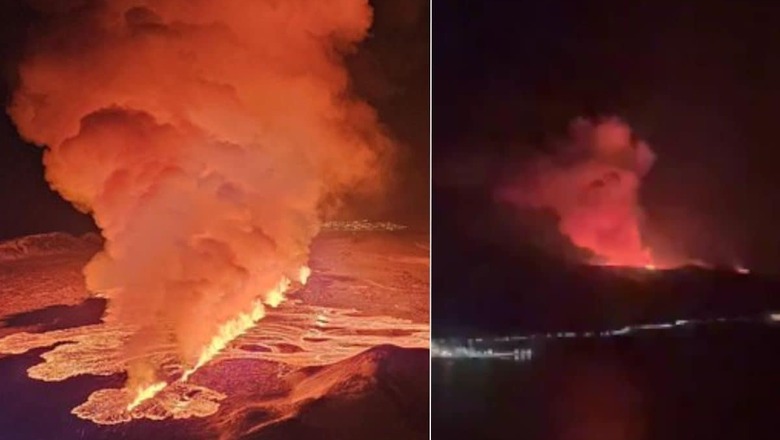
views
A volcano in Iceland erupted once again on Thursday, marking the second eruption this year and the sixth on the southwestern Reykjanes peninsula since 2021. Lava surged as high as 80 metres (260 feet) into the air, painting the sky with its fiery glow. Live footage captured the spectacle, showing vibrant streams of molten rock bursting from fissures in the earth against the backdrop of the night.
Observers from afar beheld the spectacle, witnessing the lava cascading skyward and promptly sharing their sightings on social media.
Take a Look:
Volcano – This morning’s eruption is caught on CCTV in Iceland pic.twitter.com/92CyWYge6A— RonEnglish (@RonEng1ish) February 8, 2024
Happening now: Volcano erupts for the sixth time in less than three years on the Reykjanes peninsula near Iceland’s capital, Reykjavik. pic.twitter.com/XI9tv5vdRE— Nahel Belgherze (@WxNB_) February 8, 2024
Incredible lava fountaining ongoing! pic.twitter.com/O3X5oaa8s5— Alex Spahn ️☄️ (@spahn711) February 8, 2024
As reported by Reuters, seismic activity intensified around 5:30 a.m., heralding the eruption roughly half an hour later. The eruptive crack stretched approximately 3 kilometres (2 miles), according to the Met Office, likely occurring in the same vicinity as a previous eruption on December 18.
Also Read: Internet Feels This Video Of Volcano Tourism Is ‘Stupidest Travel Trend’
The preceding eruption, commencing on January 14, lasted about two days, with lava edging towards the outskirts of Grindavik, prompting the evacuation of its nearly 4,000 residents and igniting some dwellings. While Sylingarfell mountain lies north of Grindavik, the potential impact of Thursday’s eruption on the village remains uncertain.
“But it could pose some threat to the road to Grindavik and it could pose some threat to the power plant and even to the Blue Lagoon,” Icelandic geophysicist Ari Trausti Gudmundsson told Reuters, adding that the risk depended on how much lava ultimately flowed from the ground.
Reykjanes eruptions, characterised as fissure eruptions or Icelandic-type, typically lack significant explosions or substantial ash dispersion into the stratosphere.
Also Read: Is That A Sunset Or Volcanic Eruption? This Viral Video Has Left Internet Divided
In a proactive measure, Icelandic authorities initiated the construction of dykes in November to redirect lava flows away from residential areas and vital infrastructure. Despite the reduced threat level of the volcanic system, local authorities remain vigilant, warning of potential future eruptions as land elevation continues due to subterranean magma accumulation.
(With Inputs from Reuters)



















Comments
0 comment